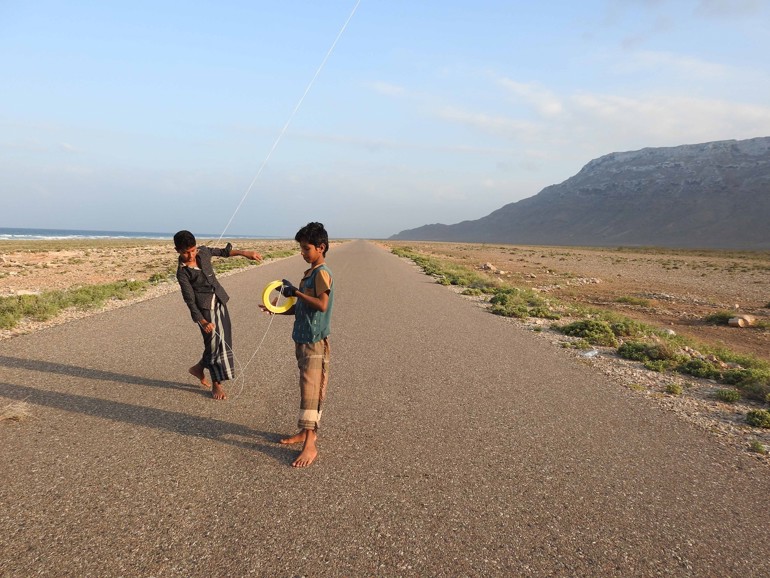The world’s deserts – and their plants – are far from homogenous.
The Arabian Peninsula, focus of RBGE’s Centre for Middle Eastern Plants (CMEP), encompasses great sand deserts such as the Rub’ al Khali (the ‘Empty Quarter’), red sands, gravel deserts, and the coastal fog deserts of southern Oman.

Rich, weird and wonderful
Desert plants have evolved an array of weird and wonderful ways to survive harsh conditions, including succulence and water storage organs.
Working with multiple partners, CMEP has threat-assessed all 800 of Arabia’s unique plant species, finding that 30 percent of these are threatened with extinction. This work allows them to highlight areas rich in plant and habitat diversity, and hotspots of threatened species, as priorities for protection (Important Plant Areas).
For instance, data collected by CMEP and the Saudi Wildlife Commission was used as evidence in the recent nomination of the spectacular ‘Uruq Bani Ma‘arid, on the western edge of the Rub’ al-Khali (‘Empty Quarter’), for UNESCO World Heritage Site status. ‘Uruq Bani Ma‘arid has the highest known plant diversity in the Empty Quarter.
In the coastal fog desert of Central Oman, research with Omani colleagues identified no fewer than three Important Plant Areas. This area contains a globally unique dwarf shrubland rich in unique, threatened species such as the Endangered Polycarpaea jazirensis, found nowhere else in the world.

Plants and people intertwined
The lives of desert people and plants are increasingly on the edge. In many places the thin, life-supporting ‘biological crust’ of the desert surface has been destroyed by overgrazing. Elsewhere, development has had unanticipated impacts on water supplies and grazing land. Understanding and restoring degraded desert habitats is vital both to their unique biodiversity and to the people whose livelihoods depend on it.
In Yemen’s Soqotra Archipelago, a shift from nomadic to settled lifestyles with increasing grazing intensity has degraded habitats and caused livestock to require unaffordable supplementary feed, exacerbated by climate change impacts on water availability. Acting at the intersection of plant conservation and sustainable livelihoods, CMEP is working to integrate traditional management practices with contemporary conservation and development programmes, simultaneously restoring habitats and improving livelihoods.

Find out more about RBGE's other pioneering biodiversity conservation programmes around the world.

